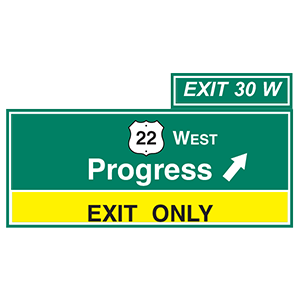2025 Washington Permit Test 20
The following questions are from real DMV written tests. These are some of the actual permit questions you will face in Washington. Each permit practice test question has three answer choices. Select one answer for each question and select "grade this section." You can find this button at the bottom of the drivers license quiz. For a complete list of questions and answers for Washington please visit https://cheat-sheets.dmv-written-test.com/en/washington/car.
Number of Tests
Number of Question
Passing Score
13. If you need to slow down while driving on a slippery road, the first thing you should do is:
Explanation
To slow down on a slippery road, you should first take your foot off the gas pedal. If you need to slow down even more, gently apply a slow, steady pressure to your brake pedal.
14. If you see this sign above your lane, you:

Explanation
If a yellow panel with the message "Exit only" is on a highway sign, the lane below the sign will not continue through the interchange. Instead, the lane will go off of the roadway to form a ramp. If you are in a lane directly under an "Exit only" sign, you may change lanes to move through the interchange or you must exit the highway.
15. The buyer of a vehicle must transfer ownership and registration:
Explanation
The purchaser of a vehicle must transfer ownership within 15 days to avoid penalty fees. If the vehicle is sold by a dealer, the transfer is the dealer’s responsibility.
16. If you become stranded in a snowstorm, the best thing to do is to:
Explanation
If you become stranded in a snowstorm, the best thing to do is stay in your car and wait for help. You are most likely to be found if you don't leave your vehicle. Additionally, it may be unsafe to walk around outside in a snowstorm.
17. When exiting a highway, you should slow down:
Explanation
When exiting a highway, you should get into the exit lane well in advance. Do not begin to slow down until after you have moved into the exit lane.
18. Defensive driving is:
Explanation
